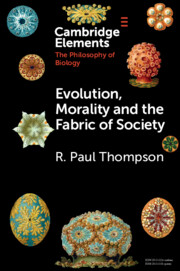Element contents
Evolution, Morality and the Fabric of Society
Published online by Cambridge University Press: 25 April 2022
Summary
Information
- Type
- Element
- Information
- Online ISBN: 9781108680752Publisher: Cambridge University PressPrint publication: 19 May 2022
References
Accessibility standard: Unknown
Why this information is here
This section outlines the accessibility features of this content - including support for screen readers, full keyboard navigation and high-contrast display options. This may not be relevant for you.Accessibility Information
- 15
- Cited by
